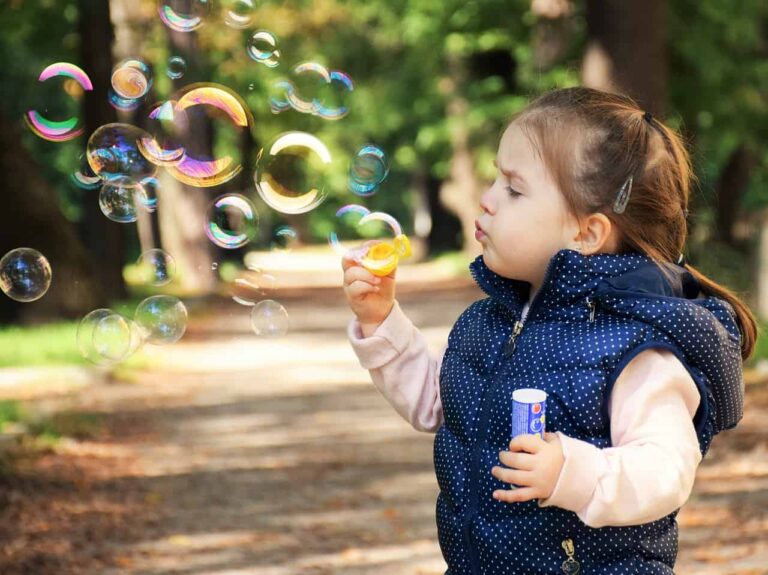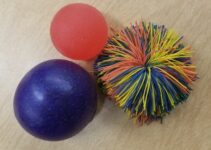Sensory processing is vital to the normal development of children, because the senses are the way that children gather information about their world. If the senses don’t develop normally, then neither does the child.
This article will help you to understand the basics of sensory processing and will give you activity ideas to help your children develop their sensory processing skills.
Table of Contents
A Brief Overview of Sensory Processing
Sensory processing is the neurological process that our brains follow to take in and interpret information from the environment.
The body uses receptors, called senses, that gather information about what is going on around our bodies and within our bodies. The following chart reviews the senses, the receptors for those senses, and what information each sense sends to the brain:
| Sense | Receptor | Information |
| Vision | Eyes | Location, position, size, shape and color of objects, people, animals, and terrain surrounding the body. |
| Hearing (Auditory) | Outer and middle ear | Sounds in the environment near the body |
| Touch (Tactile) | Nerve endings and touch receptors in the skin | Temperature, pain, and contact between the body and things that come in contact with the body, including other people and animals. |
| Taste | Taste receptors on the taste buds of the tongue | Taste and texture of food. |
| Smell (Olfactory) | Olfactory sensory neurons located at the top of the nasal cavity inside the nose. Chemical sense – moist areas of the eyes, nose, mouth and throat. | Odors, flavor of food. Chemical sense – chemicals emitted by food or in the air (National Institute of Health, 2017). |
| Proprioception | Proprioceptor neurons in the muscles, tendons and joints of the body. | The body’s position in space and position of the limbs in relation to each other. |
| Vestibular | Inner ear | Movement of the body in relation to fixed objects, balance. |
| Interoception – the internal status of the body | Multiple nerve pathways throughout the body | Detects changes in the inner functions of the body. |
All of the information gathered by these senses is transmitted to the brain through these neural pathways. The brain integrates, analyzes and interprets the information, then sends signals back to the body to cause the body to react appropriately.
These reactions are both conscious and unconscious, so sometimes we know what the brain is telling the body to do (like the desire to spit out food that is bitter), and sometimes we don’t (like the small corrections in sitting or standing balance that your body makes throughout the day).
Babies are born with all of these senses, but not all of the senses are fully developed at birth. In full term infants, the sense of touch is the most highly developed, while the senses related to movement, including vision, proprioception, and vestibular, are the least developed.
These senses mature and refine themselves throughout childhood and early adolescence.
When the brain has difficulty receiving and interpreting sensory information, a condition develops called sensory processing disorder, or SPD. People with SPD experience difficulty knowing how to react to what goes on around them because their brains are not interpreting sensory information correctly.
This condition can occur on its own, or as a part of other conditions such as autism or attention deficit hyperactivity disorder (ADHD). Please refer to our guide on SPD for more information on this condition. [Link to SPD guide here]
38 Activities for Sensory Play
The following list of activities is not all-inclusive, but it gives you a sampling of the things children can do to help their sensory systems develop. If your child has SPD, do not use this list to treat your child’s condition.
SPD is best treated by an occupational therapist (OT), so talk to your child’s physician about an OT referral. If your child already receives OT, follow the therapist’s advice regarding sensory activities at home.
7 Activities to Improve Touch Processing
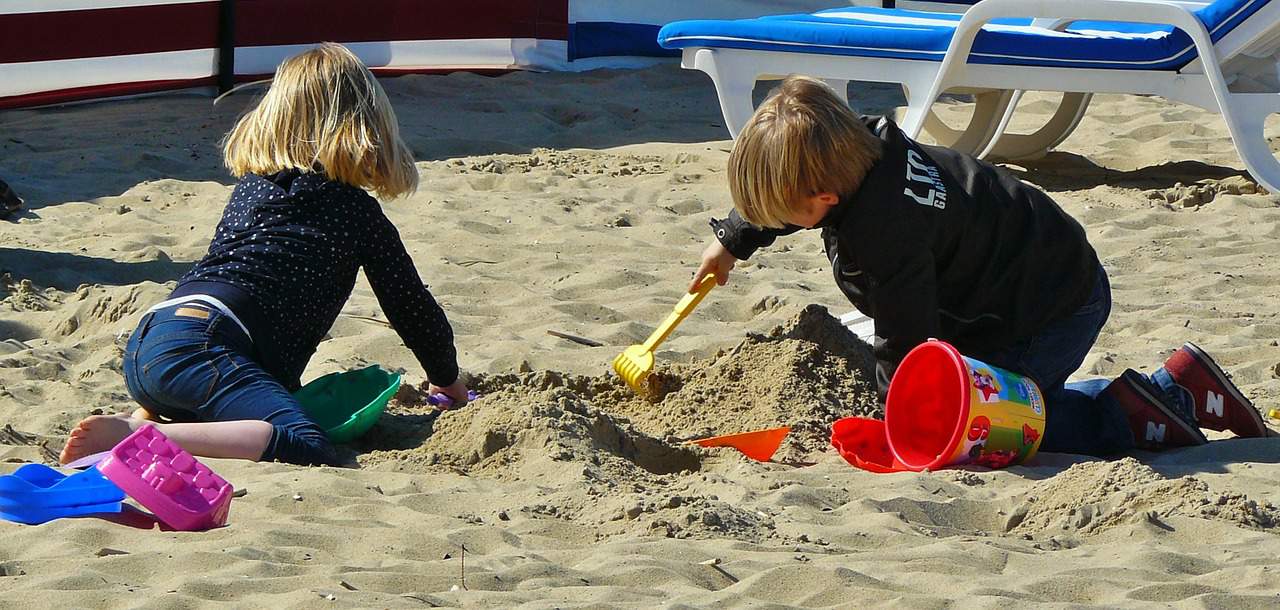
1. Bury small toys in sand, dried rice, or dried beans. Have your child dig for and find the toys.
2. Lay a heavy blanket or quilt on the floor. Have your child roll up in the blanket to play “burrito” You can also have your child lay with chest and back between large pillows and play “sandwich”.
3. Place familiar objects in a cloth bag or box with a hand hole. Place pictures of the objects on a table in front of your child. Have your child reach in the bag to grasp an object without looking at it, then point to the picture of the object.
Then have your child pull the object out of the bag to see if it is a match. Older children can feel and name the objects verbally before looking.
4. Spread shaving cream on a flat, waterproof surface. Have your child draw pictures or write words in the shaving cream. (This is also a great way to clean your kitchen table!)
5. Playing outside in the sand box or dirt pile.
6. Finger painting
7. Playing with play dough, slime, floam, or other kid-friendly substances.
6 Activities to Improve Vestibular Processing
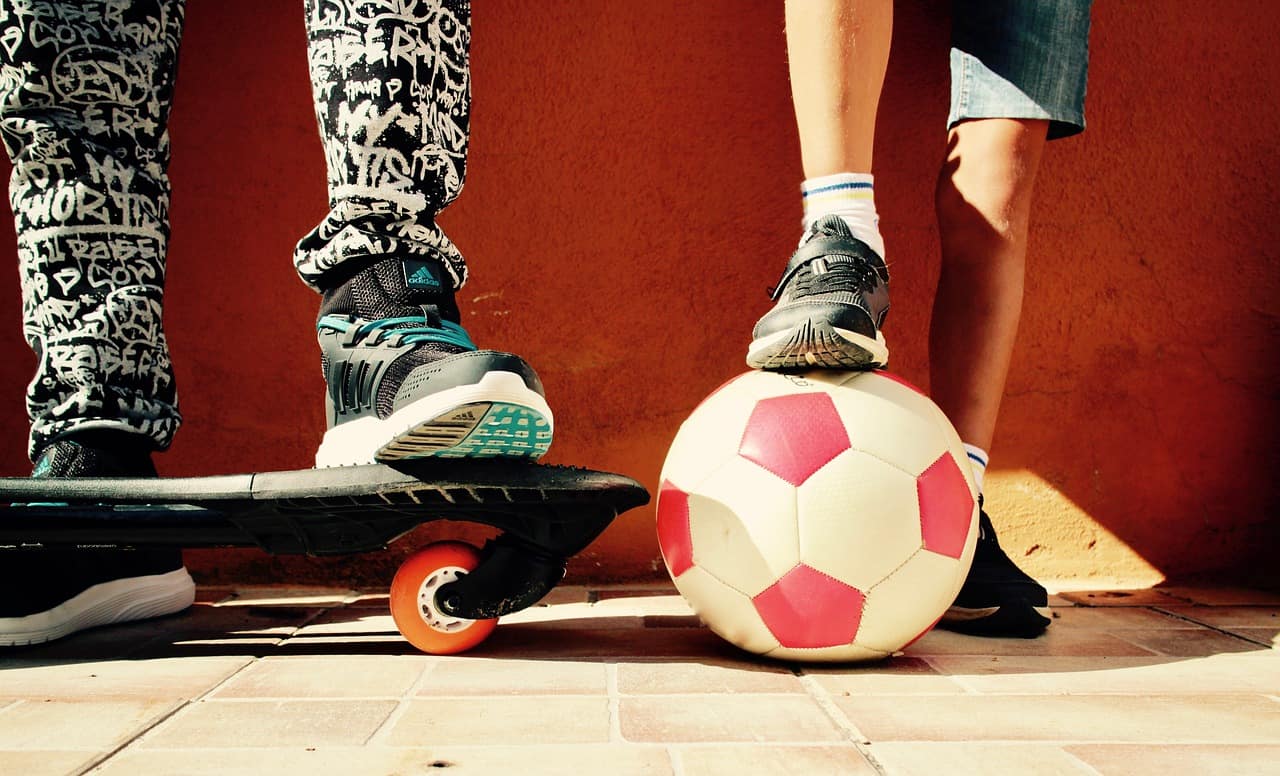
1. Swinging in any type of swing.
2. Riding a bike, scooter, or skateboard.
3. Controlled spinning activities, such as using a Sit and Spin toy or riding on a merry-go-round. Important – make sure spinning is controlled and limited in duration to less than 5 minutes.
4. Sliding down a slide or a slip n slide in the summer. Sledding on snow in the winter.
5. Running or walking quickly.
6. Riding on a rocking horse.
7 Activities to Improve Proprioceptive Processing
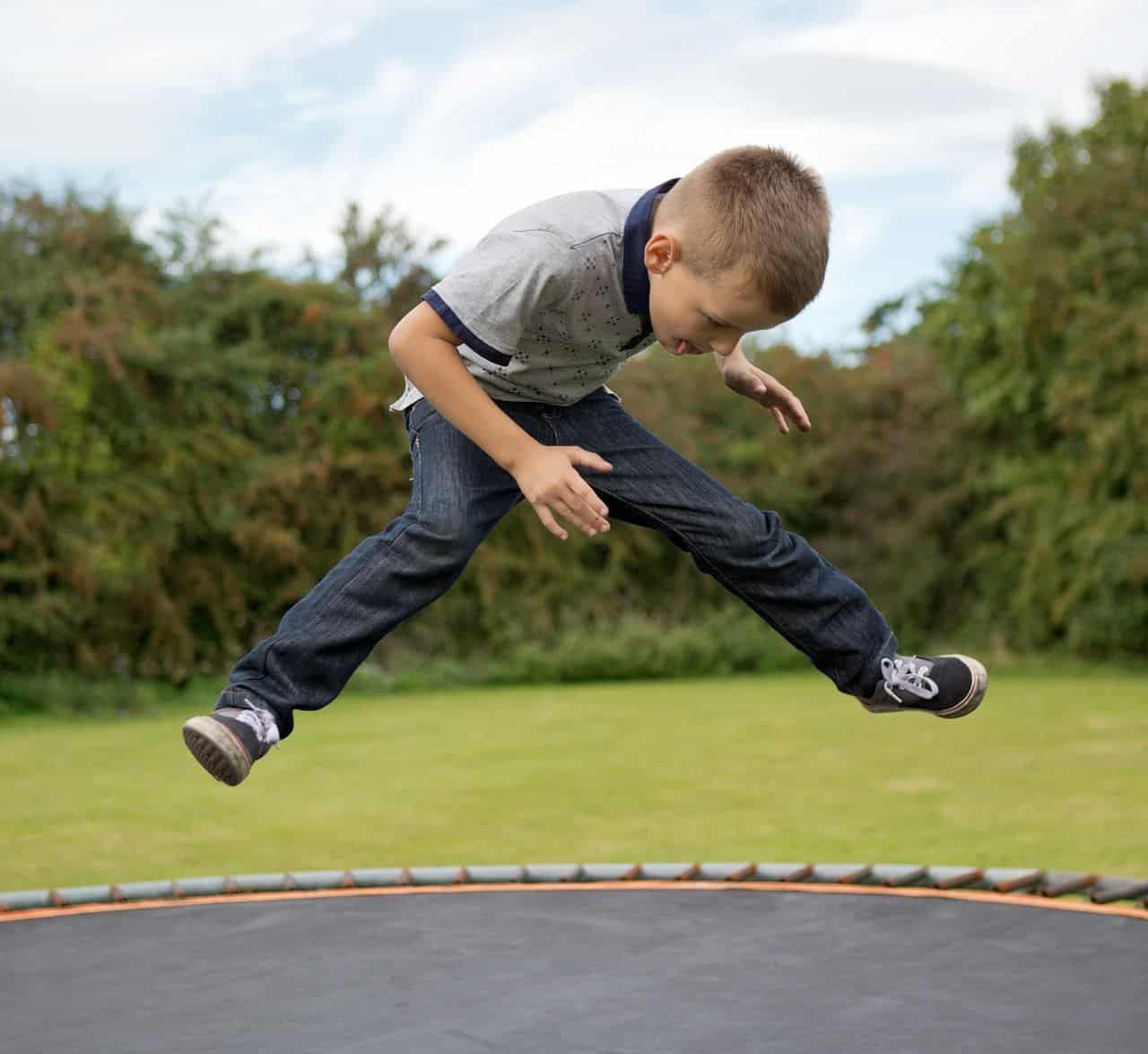
1. Pushing or pulling heavy objects, such as pulling a wagon loaded with toys.
2. Pretending to be an animal and walk on all fours. For extra input, place a large pillow on your child’s back as a “shell”.
3. Simple exercises, such as jumping jacks, push-ups or sit-ups. If your child can’t do a regular push-up, have her stand and try a push-up against a wall.
4. Playing “weight lifter” and have your child lift ½ to 1-pound jogging weights or dumbbells. If you don’t have weights, you can use soup cans or other non-breakable containers.
5. Playing Simon Says (also improves auditory processing).
6. Jumping on one of the trampoline brands or on a rebounder.
7. Climbing on a jungle gym or similar playground climbing equipment.
5 Activities to Improve Visual Processing
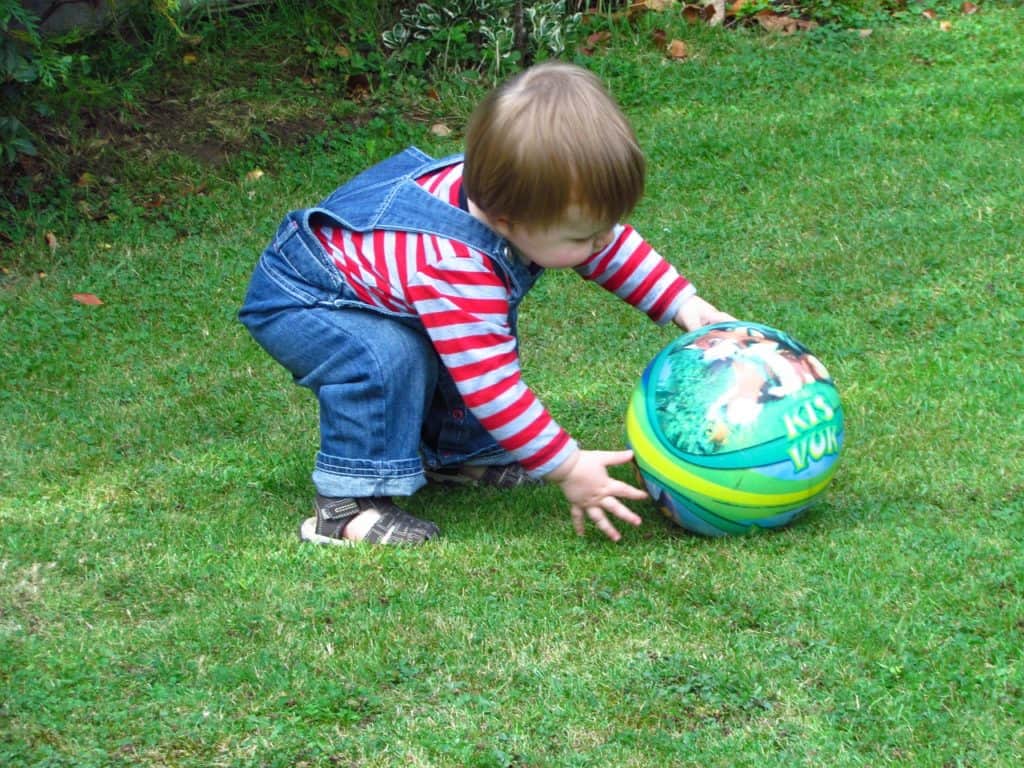
1. Hidden picture games.
2. Mazes, word searches, and dot to dot pictures.
3. Play catch. If your child cannot catch a ball, use a larger, softer ball and roll it back and forth at first. Work your way up to bouncing and catching the ball, then regular catch.
4. Target games, such as bean bag toss, Velcro darts, and other similar games.
5. Place a path of colored tape on the floor. (Make sure the tape is safe for your floor or carpet surface.) Have your child walk on the tape like a “tightrope walker”. For extra input, add curves and corners to the path.
8 Activities to Improve Auditory Processing

1. Have your child listen or music or stories without video. This makes hearing the primary method of sensory input, rather than vision.
2. Play auditory memory games, such as “I’m Going on a Picnic”.
3. Clap hands to music with simple rhythms. For extra input, pretend to “drum” to the beat with popsicle stick “drumsticks” on a safe surface.
4. Play with a rain stick – a musical instrument that contains small beads or beans that can be pounded on the ground or turned over and over for the “rain” sound.
5. Use hands to crunch up dry leaves in the fall. To add vestibular input, have your child roll in the dry leaves. To add proprioceptive input, have your child jump into a dry leaf pile (Beck, 2019).
8 Activities to Improve Smell (Olfactory) and Oral Processing
(Note – children who chew on objects are usually seeking proprioceptive input with their mouths. Some of the activities listed here also provide proprioceptive input.)
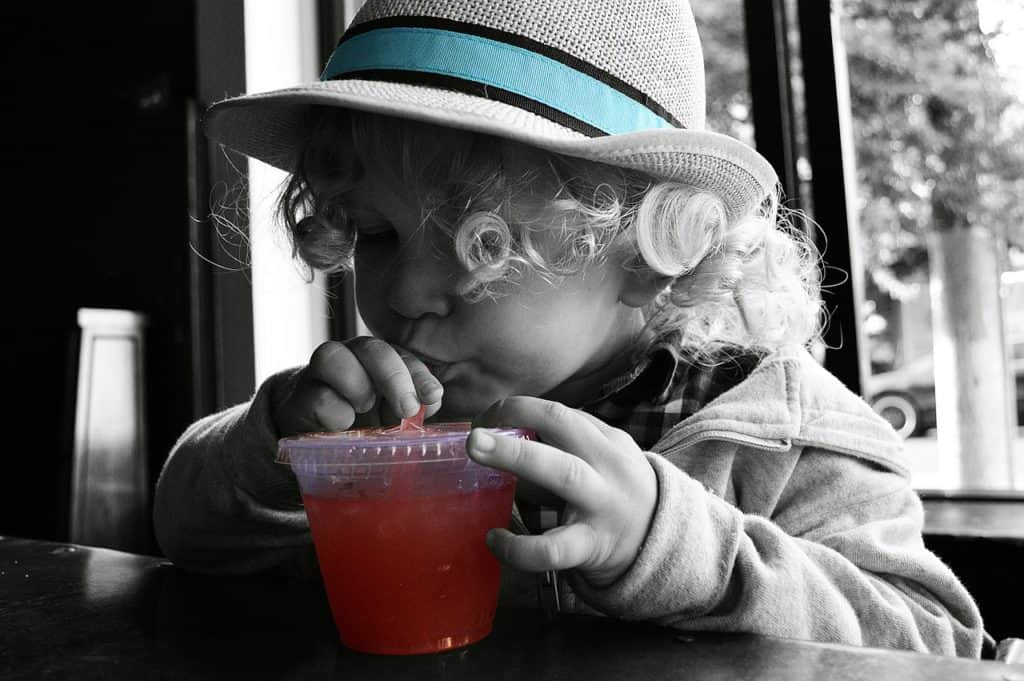
1. Chewing gum or chewy candy – this also gives your child proprioceptive input.
2. Sucking on popsicles. If your child cannot tolerate the fruit flavors of popsicles, make a few out of plain water and have your child suck those first, then gradually introduce flavors.
3. Have your child help with cooking or baking. Encourage them to smell the ingredients. Have them use their hands to mix dough. This activity also helps touch and proprioceptive processing.
4. Play with scratch and sniff stickers.
5. Drawing with scented markers.
6. Playing with scented play dough – also helps touch and proprioceptive processing.
7. Blowing bubbles in a container of water with a straw. For extra input, at a couple drops of non-toxic soap. Your child will receive input from blowing the bubbles, watching the bubbles grow and touching the bubbles.
8. Drinking through a straw. For proprioceptive input, have your child drink thick liquids through a straw, such as yogurt, milkshakes or smoothies (Le Roux, 2019).
Understanding Sensory Play by Age
Children develop in a sequential manner, and the development of sensory processing is a part of that sequence. Children will respond differently to sensory activities as they grow. Here are a few guidelines to follow when providing sensory play activities for your children at different ages:
Babies and Infants
These little ones have just been introduced to the world and they learn about it primarily through their sense of touch.
When you provide sensory play activities for your infant, make sure skin is exposed so that the touch receptors of the skin come into contact with the different shapes and textures of the objects involved.
Allow your infant to explore objects with their fingers and mouths, as this is developmentally normal.
Make sure that the objects you use during sensory activities for infants are appropriate for infants and do not pose a choking hazard. For example, instead of providing finger paint or shaving cream for sensory play, let your infant finger paint using pudding.
Toddlers
Toddlers focus on the development of their sense of balance and proprioception. They need to know where their legs and arms are in relation to their bodies and the ground, as this is vital to their ability to stand and walk.
Because proprioception is not fully developed in toddlers, keep activities simple.
Jumping up and down with two feet on a hard floor is a challenge for a toddler, while jumping on a trampoline might be preferable for an older child. Toddlers also enjoy challenging their vestibular sense by being held up high in the air or help upside down.
Make sure that you provide this type of input in a controlled, safe manner.
Preschool Age
By preschool age, children’s sensory processing systems are beginning to integrate. Children start to become more aware of their surroundings and begin to explore using all of their senses.
Often children at this age will want to perform one sensory action repeatedly, such as pouring sand on their hands or sliding down the slide, over and over and over.
Allow your child to participate in this type of repetitive sensory play. Their bodies gain information from this type of sensory input that allows the sensory mechanisms to develop and mature.
When your child’s body has had enough input, your child will stop the repetitive behavior and move on to the next thing.
A preschooler who avoids a certain type of sensory input or becomes distressed when receiving the same type of input may have a sensory sensitivity.
Don’t force your child to engage in activities that seem to cause distress, but monitor your child to see if they avoid certain types of sensory input.
School-Age Kids
As children grow and the senses continue to integrate, children like to explore their senses in more complicated and challenging ways.
Some children may seek out extreme sensory input, such as swinging very high and then jumping from the swing. Others may be more timid, fearful of falling off the bike and preferring to dig in the sandbox instead.
Allow your child to engage in sensory play at their own level, but make sure that your little sensory “daredevils” stay safe as they attempt to defy gravity.
Don’t worry if your child doesn’t seem to care for the same level or same types of sensory play as other children. Each child’s sensory system develops at its own pace and your child may not need the same types of input as other children.
It is also by this age that sensory sensitivities may become more apparent and more permanent.
Pre-Teens and Teenagers
By the time children begin adolescence, the neurological system is almost fully developed. The systems that take in and process sensory information should be intact, functioning, and integrated by about the age of 15.
Pre-teens and teenagers will no longer seek out sensory play but will instead engage in activities that will use their fully developed sensory processing system.
Organized sports, art, music, cooking, gardening, and amusement park rides are just a few examples of the activities that preteens and teens may gravitate toward, depending on the sensory input that they prefer.
Sensory sensitivities, if present, begin to follow patterns and teens who have sensory sensitivities being to learn how to compensate for them.
Adults
Sensory processing is fully established by adulthood.
Adults may enjoy some of the sensory activities that they engage in as children, but they won’t have the same effect on the sensory system.
Adults may find themselves becoming more sensitive to sensory input, especially vestibular input, as they get older. Adults can use the compensation techniques described below to help manage sensory sensitivities.
Compensating for Sensory Sensitivities
If your child has sensory processing problems, he or she may be sensitive to certain types of sensory input. For some children, this may be a mild irritation that they can easily overcome or adapt to.
For others, however, sensory sensitivity is uncomfortable and pervasive, affecting many areas of their everyday lives. Imagine how you feel when someone tickles you, when you hear fingernails scratching a chalkboard, or when you first turn on a light after sleeping in a dark room all night.
Children with sensory sensitivities feel similar when exposed to certain types of sensory input, even though this input seems normal to everyone else. Children who have SPD, including those who have conditions such as autism or ADHD, are especially prone to sensory sensitivities.
Sensitivities to sensory input may lessen or disappear as children grow, but they may not. For some people, sensory sensitivities persist into adolescence and adulthood.
Children and adults who have sensory sensitivities need to learn ways to adapt their environments to compensate for these sensitivities.
They also need to learn how to educate others and advocate for themselves so that those around them understand why they need to make adaptations to their surroundings.
Here are a few ways that people with sensory sensitivities can adapt to compensate for those sensitivities, allowing them to function and participate in everyday activities. While these compensation techniques are written with children in mind, they can be used by people of all ages who have sensory sensitivities.
Ways to Compensate For Sensitivity to Touch
- Remove tags from clothing or purchase clothing without tags.
- Wear seamless socks and clothing made from soft material such as fleece.
- Wear undergarments with a snug fit that give the body slight compression. Specialty compression garments can be purchased for people with severe sensitivity to touch.
- Use a heavy quilt or weighted blanket when sleeping or relaxing.
- Allow your child to wipe his own face. Offer cloth napkins and handkerchiefs instead of paper ones, as paper can be scratchy or irritating.
- Use tools to apply glue, paint, or other sticky substances. Paint brushes, glue sticks, and paint daubers are some examples.
Ways to Compensate for Sensitivity to Sound
- Wear noise blocking earmuffs, such as those designed for shooting sports. Earplugs can also block noise.
- Use a white noise machine when sleeping or studying.
- Complete work in a quiet, distraction free area. Make sure there are no distracting sounds in the room such as loud heating registers or buzzing fluorescent lights.
- Warn your child in advance when loud noises are going to occur, if you know about it yourself. For example, if you are going to test your smoke alarm, warn your child beforehand.
Ways to Compensate for Visual Sensitivities
- Use soft lighting or cover fluorescent lights with light filtering shades.
- Wear sunglasses outdoors.
- Wear a hat with a front brim to shade the eyes from light.
- Turn off overhead lights and use natural daylight when possible.
- Use a blue light filter on computer screens. Limit screen time if visual sensitivity is severe.
Ways to Compensate for Oral Sensitivities
- Use divided plates to keep food separated during meals.
- Allow your child to get used to the presence of a food before actually tasting it.
- Pay attention to preferred brands of food and stick to these brands. A person with oral sensitivity will be able to tell between different brands of the same foods.
- Have your child help to prepare food before eating it. Children are more likely to taste something they helped to make.
- Engage in activities that provide deep pressure to the body prior to eating to help desensitize any tactile sensitivity that may exist along with oral sensitivity.
General Guidelines for Sensory Activities
Play activities that stimulate the senses can help them to develop and mature. These activities can be beneficial for all children, not just those with SPD. The above activities are designed to target each specific sense, but your child will use multiple senses while participating.
Here are a few guidelines to follow when encouraging your children to participate in sensory activities:
- Sensory play is just that – play. Do not force your children to participate. Make activities available or offer them as a play option. Your children will most likely gravitate to each activity at some point, especially if their bodies are craving the type of sensory input provided by the activity.
- Don’t bombard your children with sensory activities. Offer one or two at a time over the normal course of the day. These activities will not “fix” your children, but will aid in their overall sensory development.
- If your child is afraid to participate in an activity, offer it in small doses. For example, if your child dislikes swinging, encourage your child to sit on the swing without it moving for a short period of time. Once your child is used to that, move the swing a little bit, and so on. Make sure your child is comfortable with the level of input the activity provides. If the input is more than they can handle, children tend to avoid those activities in the future.
- Watch your children as they participate in sensory activities, especially those that stimulate the vestibular system. If your children appear to react adversely, i.e. become nauseous or more “revved up” than usual, end the activity and provide a quiet, calming activity for your child instead.
- These activities are geared toward children. Once children reach adolescence, they tend to prefer sensory input in the form of activities that are more appropriate for their ages, such as sporting activities, cooking, crafts, and other tasks. Normal movement-based or hands-on activities help adolescents to “fine-tune” their sensory systems, so encourage your teenagers to participate in any of these types of activities they enjoy.
Resources for Parents
If you would like more information on how you can help your child develop sensory processing skills or compensate for sensory sensitivities, the following resources can help:
21 Sensory Toys to Help Your Child’s Development – our resource for 21 toys you can add to your home to help your child’s sensory development.
OT Mom Learning Activities – This website, developed and updated by an occupational therapist who now homeschools her own children, provides many different activity ideas for developing sensory processing skills.
Raising a Sensory Smart Child – This website offers information from and complementary to the book Raising a Sensory Smart Child: The Definitive Handbook for Helping Your Child with Sensory Processing Issues by Lindsay Biel and Nancy Peske.
The site includes lots of information about sensory processing, sensory processing problems, and activities to enhance sensory processing skills. The book is also available for sale through this site.
Carol Stock Kranowitz– The author of The Out-of-Sync Child and other publications on sensory processing disorder owns this website, which provides access to all of her books, articles and interviews, and other materials related to sensory processing disorder. Carol’s book The Out-of-Sync Child Has Fun gives readers numerous ideas for fun activities to help develop sensory processing.
STAR Institute for Sensory Processing Disorder – this website provides a vast amount of information, resources, and research related to sensory processing disorder. Included are activities that can help children to develop sensory processing skills and compensate for sensory sensitivities.
Taylor Bug Kisses Foundation – this website, while not directly related to sensory processing, offers a list of online resources for sensory friendly clothing for children.
References
National Institute of Health. (2018, January 16). Smell Disorders. Retrieved October 27, 2019, from https://www.nidcd.nih.gov/health/smell-disorders.
Le Roux, T. (2019). Sensory Integration Activities For Kids. Retrieved October 29, 2019, from https://www.ot-mom-learning-activities.com/sensory-integration-activities.html.
Beck, C. (2019). Auditory Processing Activities. Retrieved October 29, 2019, from https://www.theottoolbox.com/auditory-processing-activities/.

